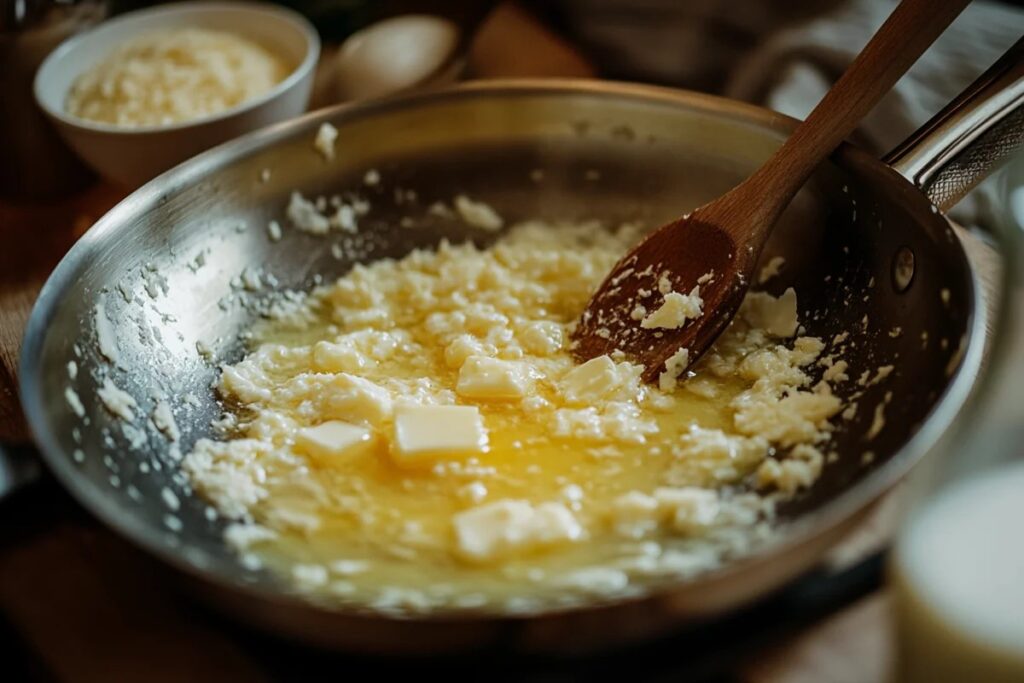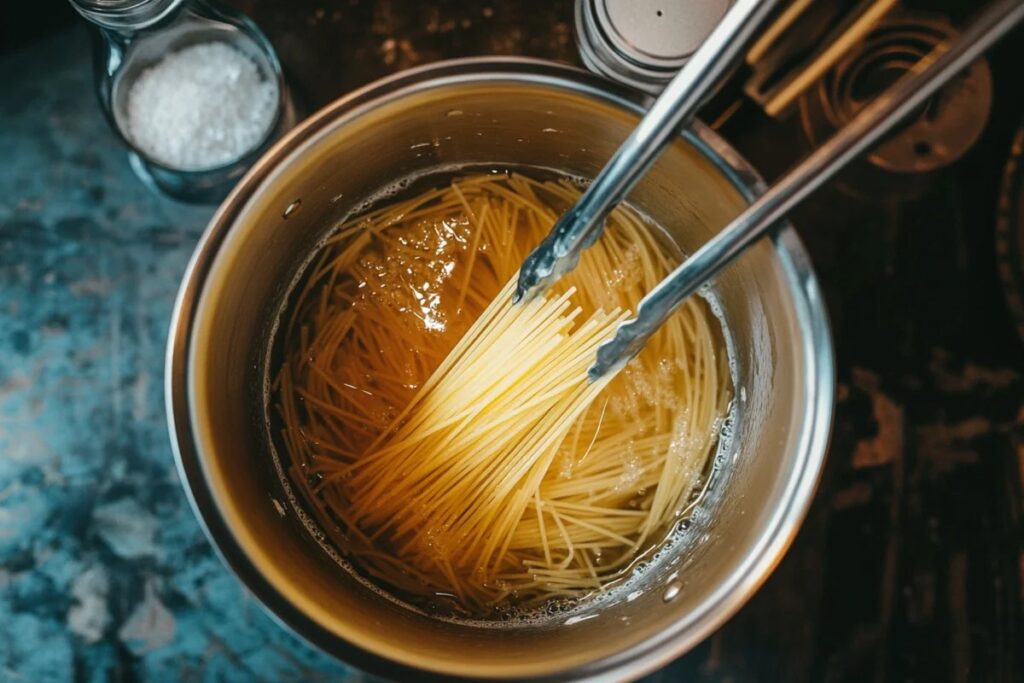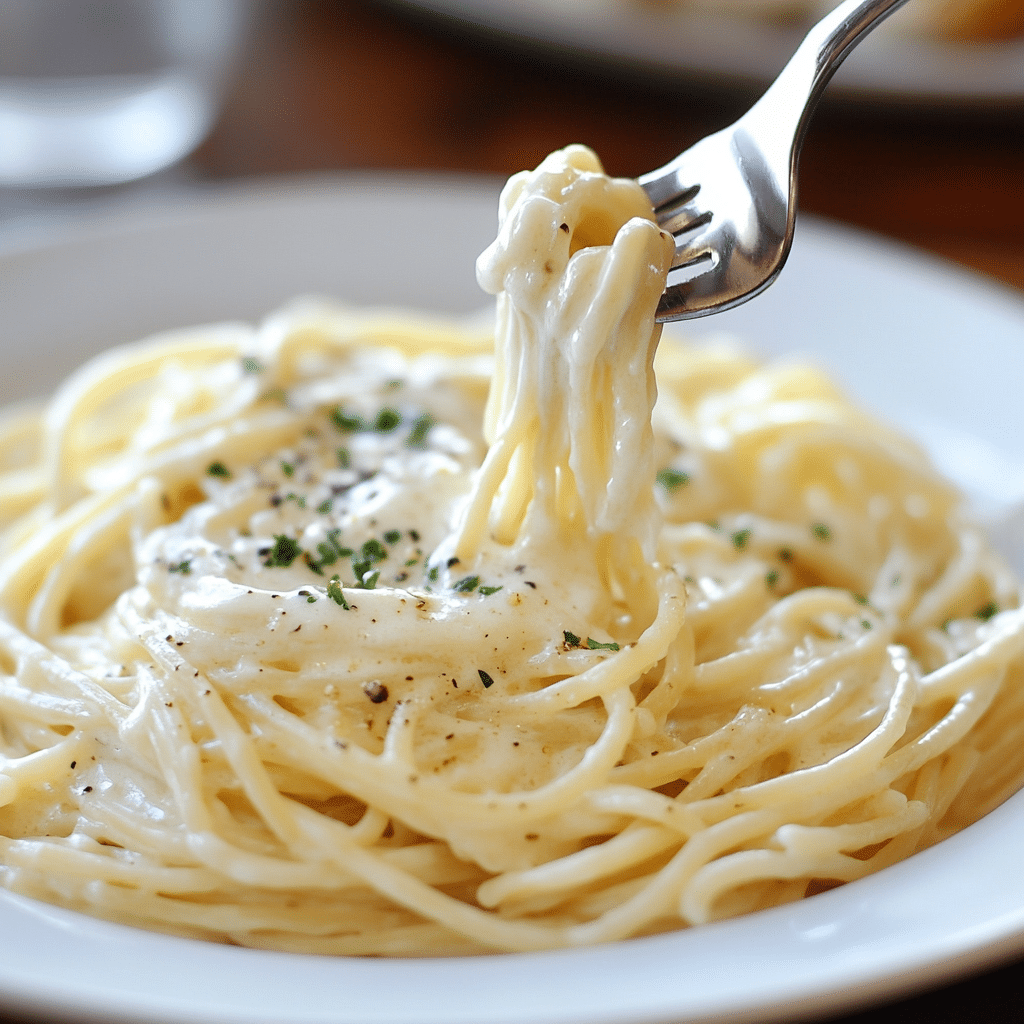Rich, creamy, and satisfying, this guide to alfredo spaghetti offers simple tips, techniques, and delicious variations.
Introduction
Alfredo spaghetti is a creamy, comforting pasta entrée that blends tender noodles with a velvety sauce. In this comprehensive guide, you will learn about its origins, essential ingredients, cooking methods, delightful twists, pairing suggestions, and troubleshooting tips. Ultimately, you will become confident in creating a version of alfredo spaghetti at home that suits your personal taste and dietary needs.
The Origins of Alfredo Spaghetti
This indulgent dish did not begin in the United States, yet it has become one of America’s most beloved comfort foods. Initially, a precursor to this classic appeared in Italy during the early 20th century. However, it was not originally called by its current name. Its predecessor, Fettuccine Alfredo, emerged in Rome, where restaurateur Alfredo di Lelio created a simple blend of butter and Parmesan cheese. Eventually, Americans embraced this rich combination, and alfredo spaghetti took shape, thanks to the similarity to Fettuccine Alfredo and the wide availability of spaghetti noodles in home kitchens.
The difference from the original Italian version lies mainly in the pasta shape and added ingredients. While the Roman classic relies solely on butter and Parmesan, the American adaptation often includes heavy cream and garlic. This results in a thicker, creamier sauce, commonly paired with spaghetti rather than fettuccine. Thus, this creamy pasta dish evolved into a staple, frequently enhanced with chicken, shrimp, or vegetables. Even though the Italian tradition focuses on the simplicity of butter and cheese, the American version proves that adapting ingredients can still produce something utterly decadent.
Selecting Quality Ingredients for the Perfect Dish

When preparing this comforting meal, choosing quality ingredients matters. After all, the entrée’s simplicity means each component plays a critical role in its flavor and texture.
- Spaghetti:
Opt for high-quality spaghetti made from durum wheat semolina. Consequently, the strands hold up well during boiling and maintain a pleasant, al dente bite. Moreover, premium pasta captures the creamy sauce more effectively. - Butter:
Use unsalted, high-quality butter. Thus, you maintain complete control over seasoning. Good butter imparts a richer, creamier taste and sets the foundation for the classic sauce. - Heavy Cream:
Fresh, full-fat heavy cream ensures a velvety consistency. Comparatively, lighter creams may produce a thinner sauce. The rich texture you desire starts with the right cream. - Parmesan Cheese:
Grate Parmigiano-Reggiano at home. Indeed, pre-grated cheese often includes anti-caking agents that reduce creaminess. Freshly grated Parmesan melts smoothly, lending a luxurious feel. - Garlic:
Include fresh garlic cloves for subtle aroma and depth of flavor. While the Italian original may not emphasize garlic heavily, the American style often does, resulting in a savory boost. - Salt and Pepper:
Season carefully. Particularly, use kosher salt and freshly ground black pepper for optimal taste. Add these slowly, tasting as you go, since Parmesan is already salty.
By focusing on ingredient quality, you ensure that every bite of your pasta dish tastes authentic and delightfully rich.
Mastering the Perfect Creamy Sauce
To achieve a perfect consistency, technique is essential. Initially, heat butter and garlic over medium-low heat until fragrant. Then, pour in heavy cream, warming it gently without letting it boil too vigorously. Eventually, stir in grated Parmesan. The cheese should melt smoothly into the cream. Stir continuously to prevent clumps and to encourage proper emulsification. Generally, the sauce should coat the back of a spoon.
Afterward, season with salt and pepper, tasting frequently to ensure balance. Because Parmesan can be salty, go light on additional salt at first. Furthermore, if the mixture seems too thick, add a splash of hot pasta cooking water. This starchy liquid helps bind the sauce to the noodles, resulting in a smooth, creamy texture. Finally, toss the cooked spaghetti directly into the sauce to ensure every strand gets coated evenly.
Cooking Spaghetti Perfectly Al Dente

A crucial step in achieving exceptional results is cooking the pasta correctly. Initially, bring a large pot of salted water to a rolling boil. Additionally, use about four quarts of water per pound of pasta. Adequately salted water ensures the spaghetti absorbs proper seasoning.
Subsequently, drop in the pasta and stir occasionally. Boil according to the package instructions, but test the noodles two minutes before the recommended time. Ideally, they should offer slight resistance at the center. Once al dente, drain immediately, reserving a cup of the cooking water. Incorporate the pasta directly into the warm sauce. Consequently, the residual heat and starchy water help form a luxurious, creamy coating around each strand.
Common Mistakes to Avoid
While this dish appears simple, several pitfalls can lead to subpar results. However, with a few mindful steps, you can avoid these errors.
- Overcooking the Pasta:
Cooking spaghetti too long results in a mushy texture. Conversely, aim for al dente firmness. - Burning the Butter and Garlic:
Keep the heat moderate and stir frequently. Eventually, this prevents the butter from browning too much and the garlic from turning bitter. - Adding Cheese at the Wrong Time:
Incorporate Parmesan after the cream has warmed through. Indeed, adding it too early can cause clumping or a grainy texture. - Forgetting the Pasta Water:
Add a small amount of starchy cooking water if the sauce seems too thick. Comparatively, this step can make all the difference between clumpy and silky.
By paying attention to these details, you ensure your creamy pasta dish turns out consistently delicious.
Variations on the Classic Sauce
This creamy entrée is incredibly versatile. Accordingly, you can adapt it to suit different dietary needs and flavor preferences. Another approach involves incorporating proteins or vegetables to create a more robust meal.
Vegan and Dairy-Free Alternatives
Even those avoiding dairy can enjoy a rich, comforting sauce. Consequently, consider using plant-based butter, oat cream, and nutritional yeast instead of Parmesan. Equally, blending roasted cashews into a creamy paste creates a luscious texture. Indeed, these substitutions let you savor a sauce similar to the original—just without traditional dairy.
High-Protein Options: Chicken and Shrimp
Adding chicken or shrimp elevates this pasta into a hearty main course. Sauté seasoned chicken breast strips or shrimp in olive oil until cooked through. Then, toss them with the sauce and spaghetti. Thus, the added protein pairs naturally with the creamy base. Likewise, grilled salmon or scallops can be excellent choices. Basically, any protein that complements the buttery flavors works beautifully.
Vegetable Add-Ins
Fresh vegetables bring color and nutrition. For example, fold in steamed broccoli florets, sautéed mushrooms, or wilted spinach. Subsequently, bright colors and earthy notes balance the richness. Likewise, roasted cherry tomatoes or caramelized onions add sweetness and complexity. Another idea is fresh peas or asparagus tips for a seasonal twist.
Dietary Considerations and Healthier Alternatives
While delicious, the classic version can be high in calories and saturated fats. Consequently, consider lighter alternatives to make the meal more health-friendly. For example, use half-and-half instead of heavy cream, or reduce the amount of butter. Furthermore, include more vegetables or lean proteins to increase fiber and nutrients. Particularly, whole-wheat or legume-based pasta can provide more protein and fiber than traditional semolina noodles.
Moreover, if you follow a gluten-free diet, choose a suitable gluten-free pasta. Thus, you can indulge without compromising your health needs. Undoubtedly, you can adapt this creamy entrée in countless ways to better fit your lifestyle.
Pairing With the Right Sides
Crafting a complete meal involves thoughtful side dish selection. Indeed, lighter, fresher sides help offset the richness of the main course. Consider these options:
- Green Salad:
A crisp salad with a tangy vinaigrette provides brightness. Consequently, it balances the creamy entrée. - Roasted Vegetables:
Carrots, asparagus, or Brussels sprouts add savory depth. Their natural sweetness and crunch contrast with the sauce. - Garlic Bread:
A slice of crusty garlic bread adds comfort. However, moderate portions help keep the meal from feeling too heavy. - Light Soups:
A simple broth-based soup can cleanse the palate. Comparatively, a light starter primes your taste buds for the main event.
By selecting fresh, vibrant sides, you create a balanced dining experience. Basically, thoughtful pairings ensure a memorable meal.
Storing and Reheating Leftovers
Storing leftovers properly allows you to enjoy the dish again. Afterward, transfer cooled pasta to an airtight container and refrigerate for up to three days. To reheat, add a small splash of milk or cream to loosen the sauce, then warm it gently over low heat, stirring often. Consequently, this method helps maintain the sauce’s smoothness.
For longer storage, consider freezing the sauce separately from the noodles. However, cream-based sauces can become grainy after freezing. Nevertheless, if you must freeze, thaw overnight in the fridge and reheat carefully. Subsequently, stir often to restore creaminess as much as possible.
Creative Uses for Leftover Pasta
Leftovers can inspire new culinary creations. For instance, toss the remaining noodles into a baking dish with roasted vegetables and a light sprinkling of cheese. Consequently, bake until bubbly for a comforting pasta casserole. Another approach involves adding chopped chicken, spinach, or sun-dried tomatoes.
Moreover, consider transforming leftovers into a pasta frittata. Simply beat a few eggs, fold in the cooled pasta, and cook in a skillet until set. Indeed, this method turns yesterday’s dinner into a unique, satisfying breakfast or brunch.
Serving for Special Occasions
While the dish works well for casual dinners, it can also shine at special gatherings. Accordingly, serve it in elegant bowls, garnished with fresh herbs and a sprinkle of extra Parmesan. Indeed, a dash of nutmeg can add subtle fragrance. Meanwhile, pair it with a crisp white wine or a sparkling beverage.
If hosting a dinner party, consider a “build-your-own” station. Consequently, guests can customize their bowls with proteins, vegetables, and seasonings. Moreover, set out bowls of roasted garlic, sautéed mushrooms, or chili flakes. Thus, everyone enjoys a personalized meal that feels gourmet.
Exploring Sauce Variations Beyond the Classic
While the original approach is delightful, experimenting with sauce variations can expand your repertoire. Furthermore, blending marinara into the cream sauce creates a pink-hued “Rose Alfredo.” Equally, adding fresh basil or parsley brightens the flavor profile.
For a spicy kick, include a pinch of red pepper flakes. Conversely, for a smoky aroma, consider crisped pancetta or a hint of smoked paprika. Indeed, these small tweaks transform a familiar classic into something new and exciting. Another idea is stirring in a spoonful of pesto for herbal depth. Ultimately, the possibilities are endless.
Troubleshooting Sauce Consistency
Sometimes the sauce may not turn out perfect on the first try. Nevertheless, most issues can be fixed with simple adjustments.
- Too Thick:
Add a splash of pasta water or milk, stirring gently until smooth. - Too Thin:
Add more grated Parmesan or let it simmer briefly to thicken. - Grainy Texture:
Lower the heat and stir slowly. Avoid adding cheese at too high a temperature. - Too Bland:
Add a pinch of salt, a crack of pepper, or a hint of garlic powder to boost flavor.
By making these adjustments, you can restore balance and ensure a velvety, satisfying result.
for more recipes follow our facebook page
Frequently Asked Questions
Can I use spaghetti instead of fettuccine for Alfredo?
Yes, spaghetti works as a fine substitute for fettuccine in this type of sauce. Basically, it creates a similar creamy experience. Indeed, many home cooks find spaghetti strands hold the sauce differently, but the result remains rich and comforting.
What is Alfredo spaghetti called?
Often, the American adaptation is simply referred to as alfredo spaghetti to differentiate from Fettuccine Alfredo. However, in Italy, the original dish is known as Fettuccine Alfredo. This newer version, using spaghetti, has become popular in U.S. kitchens.
What is it called when you mix Alfredo and marinara sauce?
Mixing Alfredo with marinara results in a pink or “Rose Alfredo” sauce. By blending creaminess with tangy tomato flavors, you create a balanced sauce that pairs beautifully with pasta. Accordingly, it’s perfect for those who love both rich and bright elements in their meal.
Does it taste good to mix Alfredo and marinara?
Yes, the combination often tastes delightful. The creamy richness tempers the acidity of marinara, while the tomato base adds brightness. Furthermore, the resulting pink sauce complements the pasta nicely. However, taste and adjust seasonings to ensure both sauces harmonize well.
